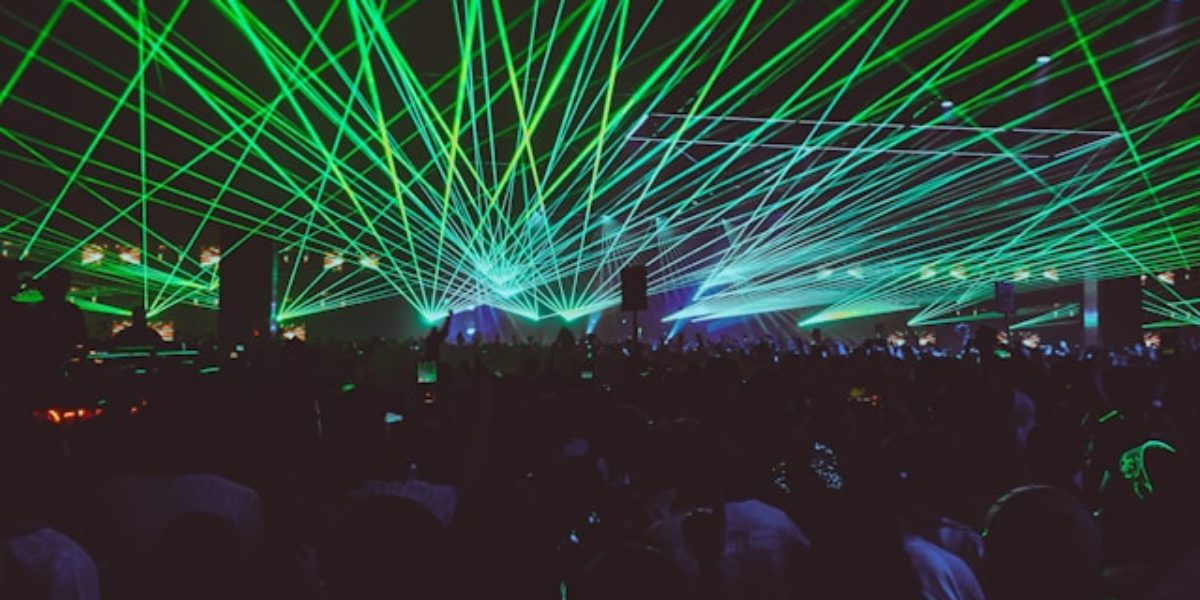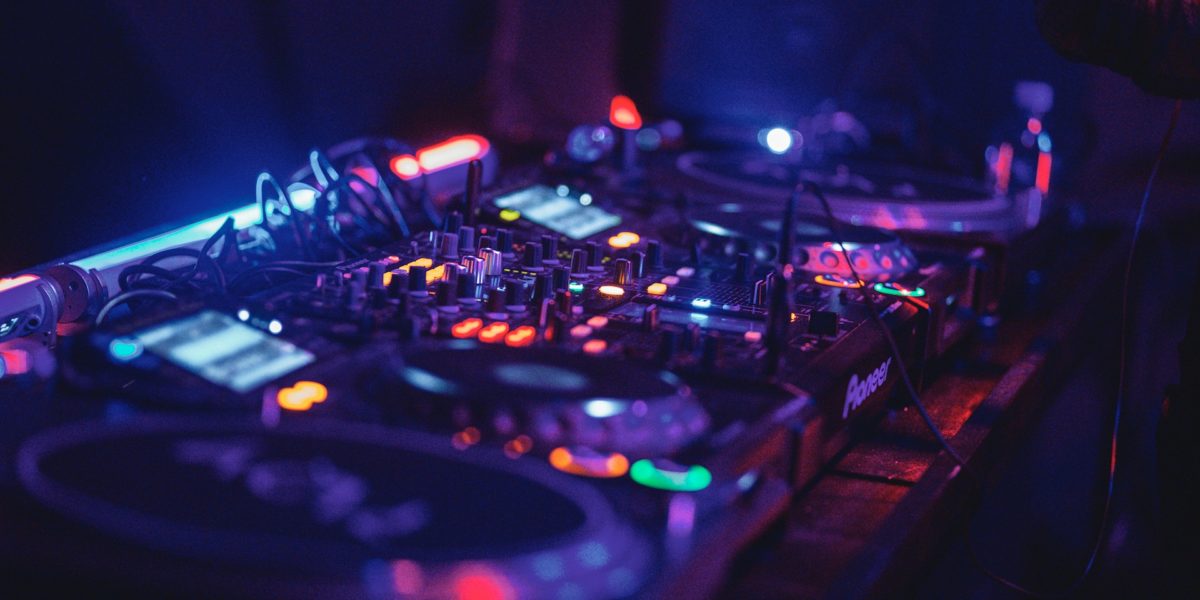The devices with which electronic music was initially created occupied entire rooms. Tone generators, tape recorders, filters, and kilometers of cables made experimenting with this new music inaccessible to most. It belonged to the world of laboratories and research institutes. The development of transistors and chips led to increasingly faster miniaturization and, consequently, a reduction in the prices of electronic instruments such as synthesizers and drum machines. Japanese companies led the way in the 1980s. They involved various musicians in the development of their instruments and were not afraid of standardization, allowing different machines to ‘communicate’ with each other. Miniaturization continued, turning home computers (PC, Apple, Atari, Amiga) into ever-improving home studios. Software gradually displaced hardware until, eventually, one laptop could house all synthesizers and drum machines ever released. This gave rise to the bedroom producer, who could produce entire albums from their bedroom. With the advent of the internet, these productions could be distributed worldwide. Initially through various peer-to-peer networks like Napster, Limewire, or Kazaa, and later through platforms such as Myspace, Soundcloud, Spotify, or Bandcamp.
Just like the hardware dissolved into software, digitization ensures the dissolution of various musical boundaries: between genres, professionals and amateurs, autodidacts and the educated, rich and poor, etc. Digitization has become a tool of emancipation, echoing the early electronic pioneers who sought to liberate sound from banality and gave everyday sounds the opportunity to become music.
Early electronic music
According to some music historians, the development of electronic music is believed to have three different ‘cultures,’ each of which can be seen as a starting point. These emerged in the period 1948-1953 in France (Musique Concrète), Germany (Elektronische Musik), and the US (Music for Magnetic Tape). Earlier in the twentieth century, there were already experiments with new electric or electronic instruments. In the Netherlands, in the 1950s, experiments with electronic music were conducted at the Natlab of Philips with the idea of providing ordinary people at home with a concert hall experience. This resulted in ‘The Fascinating World of Electronic Music’ a record featuring electronic music made at the lab. The electronic music department of Philips did not have a long life, but it did influence later (pop) musicians such as Kraftwerk, Klaus Schulze, and Pink Floyd.
Synth City
The initial incarnations of the synthesizer could hardly be called instruments. They were large machines that generated tones and could be manipulated by connecting other devices through cables. In the 1960s, American Robert Moog was one of the first to successfully build a more manageable instrument. It still consisted of separate modules, but it no longer took up an entire room. This is considered the beginning of the synthesizer. Subsequently, innovations followed rapidly. Moog managed to reduce the size of all the different modules and house them in a cabinet. The development of transistors and microchips further accelerated the progress.
Initially, the synthesizer was a curiosity, reserved for experimental musicians. Wendy Carlos changed that with her 1968 album Switched-On Bach, where she played Bach on a Minimoog. The album was a resounding success and familiarized a broad audience with the sound of the synthesizer.
The synthesizer has transformed every genre of popular music and has also given rise to new genres. Although the synthesizer has transitioned from hardware to software today, the popularity of vintage synthesizers remains significant. Additionally, building synthesizers oneself has regained popularity thanks to modern electronics and online communities.
Japan
In the 1980s, Japan was undergoing an unprecedented economic boom, marking the decade when the Japanese industry would come to dominate. Japanese products, ranging from cars to electronics, became renowned for their quality and innovation. Japanese instrument builders also benefited from this trend, focusing on producing affordable electronic instruments. They were unafraid to experiment and willing to gather expertise from around the world. This led to intriguing collaborations; for instance, Afro-American nuclear electrical engineer and keyboardist Don Lewis collaborated with the Japanese company Roland to develop the legendary 808 drum machine. Additionally, he worked with Yamaha to create the first and most sold digital synthesizer, the DX-7. Another example is the fascinating story of Japanese musician Okuda Hiroko, who, fresh from the conservatory with the first Japanese thesis on reggae, joined Casio and designed sounds for the Casio MT-40. Through various twists of fate, these sounds laid the foundation for an entire reggae genre (Sleng Teng) in Jamaica.
Initially, American industry did not take Japanese products entirely seriously. Japanese drum machines and synthesizers had a different sound compared to their American counterparts. They were not perfect imitations of ‘real’ instruments. However, this uniqueness appealed to young house and techno producers who freely experimented with these devices, giving rise to new sounds and entire genres.
Today, Japanese companies are the dominant force in the electronic music world, although it’s worth noting that everything can now be replicated on a laptop. Most American companies have either disappeared or been acquired by their Japanese competitors.
Home Computers
Fairly early in the development of electronic music, computers were brought in to assist in creating and composing music. These were expensive machines found only in advanced studios. In the 1980s, computers began to find a place among the public. The so-called home computer quickly became a tool for making music. By the late 1980s, the first home computers capable of communicating with synthesizers and drum machines emerged. This made it possible to record and edit your music at home. In the following years, computers became increasingly powerful. At one point, they could emulate the sounds of all synthesizers and drum machines ever produced. On your laptop, you could mimic thousands of instruments, always carrying your studio with you in your bag.



